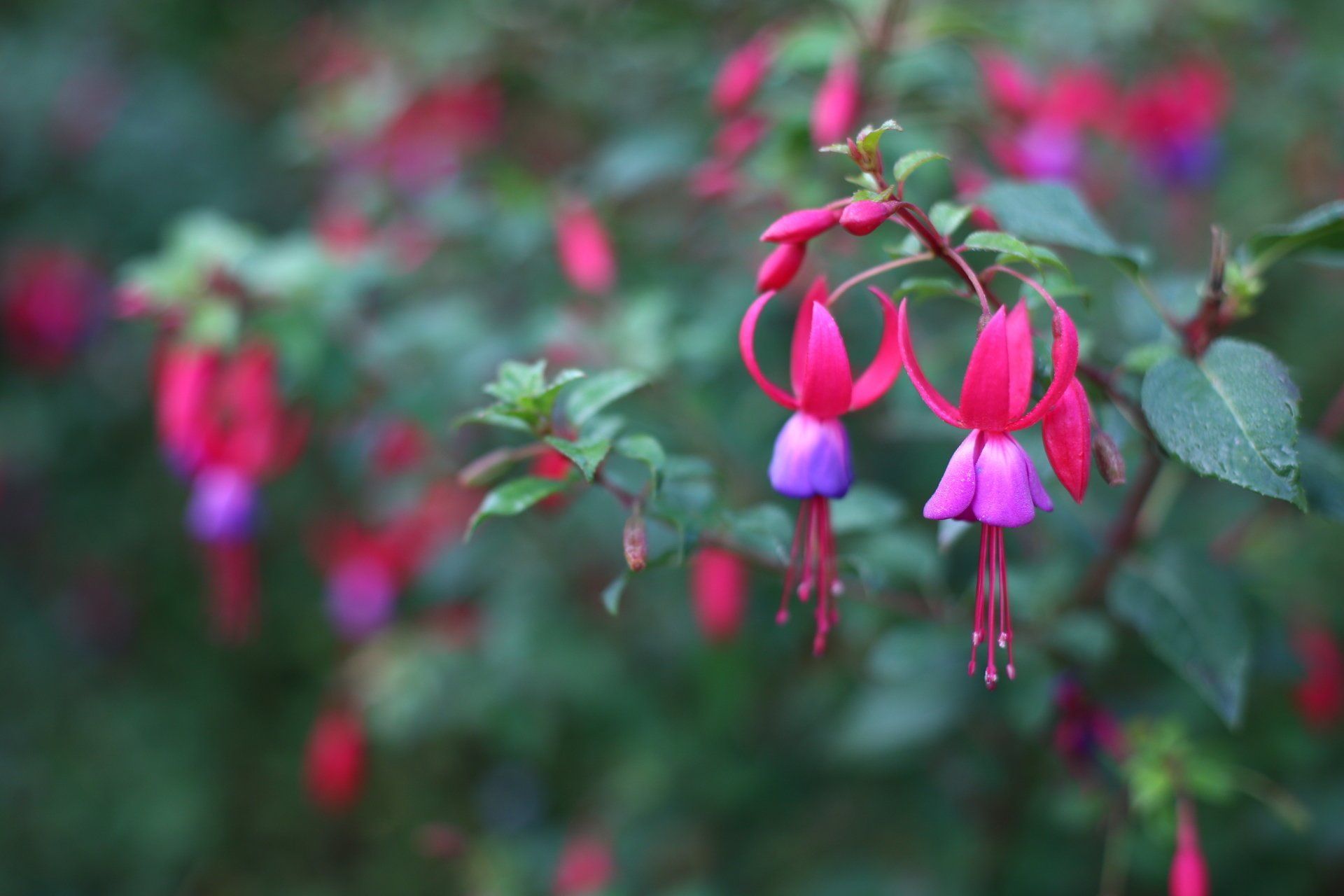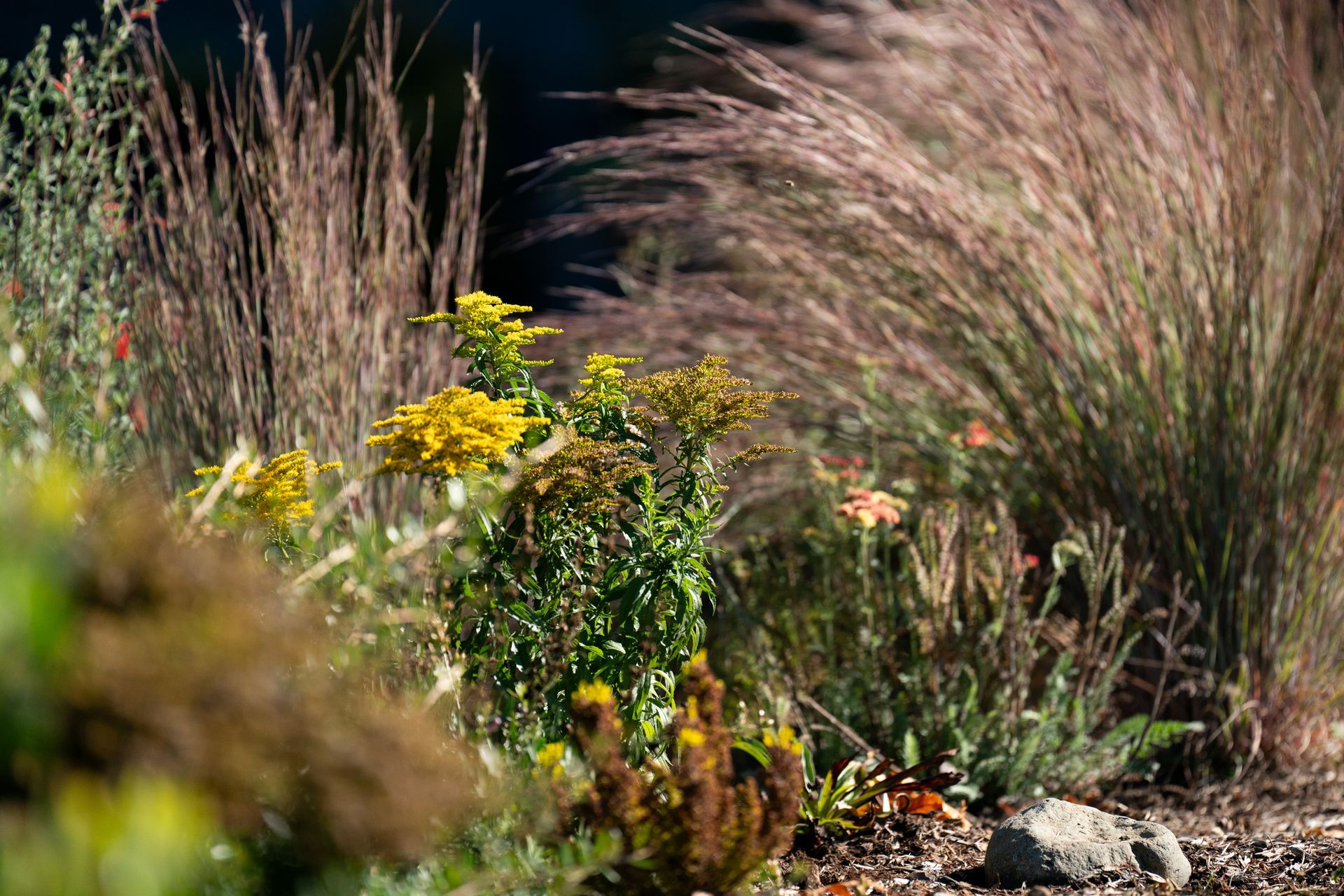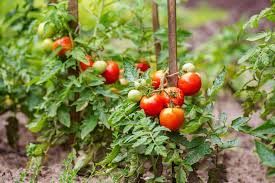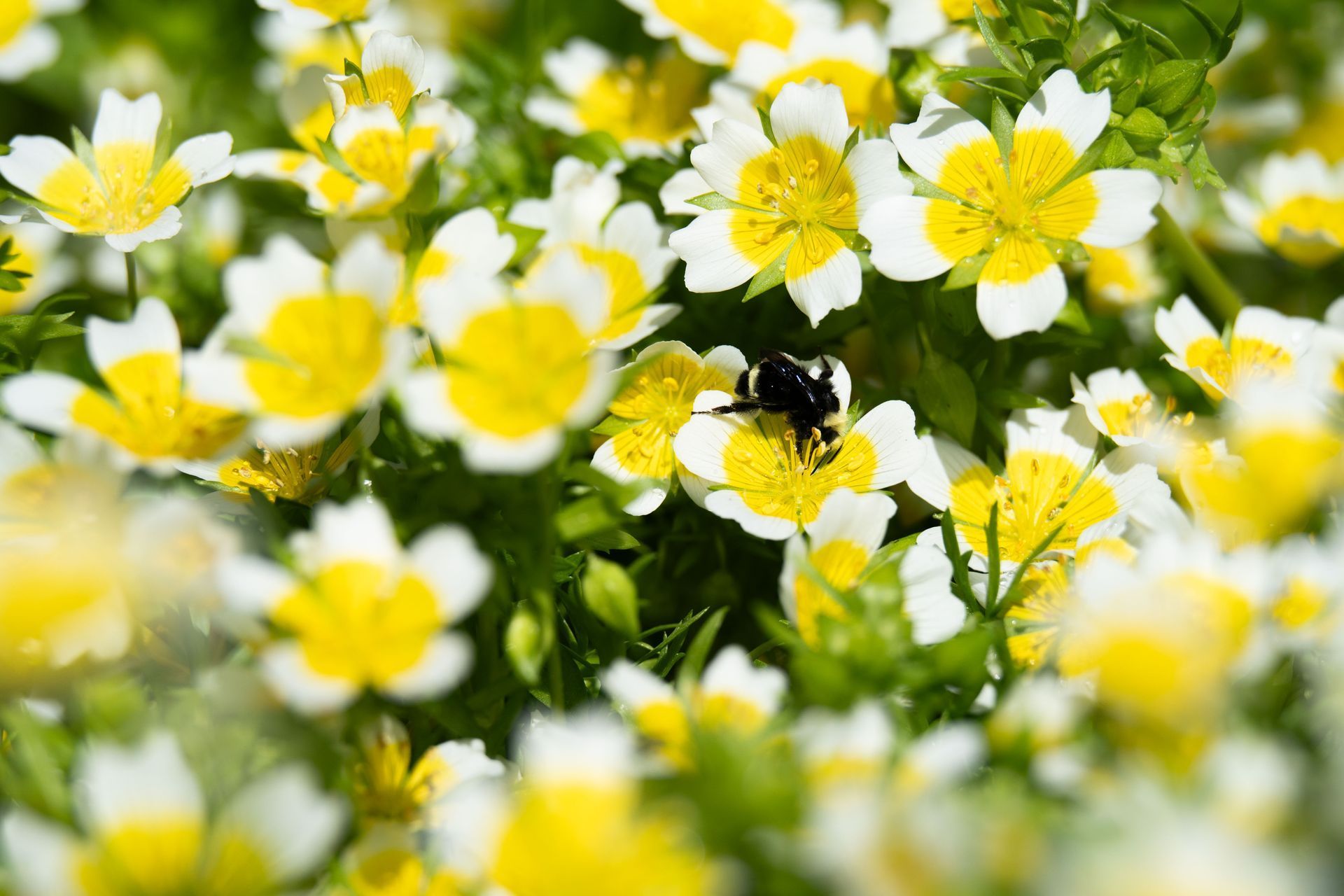Mulch, Schmultz
Yesterday I walked with two clients while discussing their harshly sterile, bare, sloping side yard. Soil was eroding down onto the public sidewalk. It was slippery and muddy and very unattractive.
One of them brought up the idea of a nice boulder retaining wall set next to the sidewalk, which would help to hold back the soil.
The other remarked, “But that would cost a lot of money and we are not ready to spend that right now, even though it might solve a lot of the problem with our sloping, ugly side yard, and would look good to the neighbors.”
The slope was not so steep that it would not be walkable, and they could have installed a lawn to hold the soil back from washing onto the sidewalk. However, they did not want to plant grass. The idea of mowing a sloping side lawn, which they would not use, did not appeal to them. I suggested a much less expensive option of placing a 2—3 inch layer of bark mulch on the bare soil.
They wondered what I meant by mulch.
Mulch is any material placed on the ground which, when spread around in a fairly uniform layer, will insulate, protect or enrich the soil. Examples of mulch are: leaves, tree bark, compost, shredded paper, wood chips, wood shavings, shredded cardboard or nut hulls/shells.
Here are some examples:
Compost mulch will enrich the soil by feeding its resident population of micro flora and fauna, preventing the bare soil from eroding, helping to retain moisture in the dry periods and suffocating weeds. It is a temporary fix, however, because most good compost will be quickly broken down and eaten by the micro flora and fauna. Its nutritional benefits will then be available to the roots of the plants underground, but the erosion protection, the retention of moisture and, particularly, the positive effect of the weed suffocation will be gone very quickly. It is a common mulch used around plants with a final layer of bark mulch placed on top.
Leaf mulch is, as you may guess, a collection of fall leaves that will quite possibly last the winter and into early spring. They will provide erosion protection during the rainy season and, if they last long enough, into the early part of the dry season they will provide moisture retention as well. However, leaf mulch is also generally somewhat temporary. Shredded fall leaves or thinly placed grass clippings are excellent as far as nutrition goes, but it has an even shorter life span because this product is the most delicious to micro flora and fauna. The plus side is that feeding the micro flora and fauna will feed your plants!
Straw mulch/hay mulch is occasionally available as an option. It is moderately slow to break down, but it carries many, many seeds. Therefore, it might best be used in a large commercial setting where there is a large expanse of soil that needs to be protected from erosion, but the owner is not picky about every kind of meadow plant imaginable germinating everywhere. This is not a product ever recommended for suburban planting beds.
Bark mulches can be excellent on all accounts and comes in various colors, grind sizes and tree types.
- Fir Bark types: The most common type is fresh Douglas fir. It is reddish in color and slow to break down. It is the least expensive of the bark products. The micro flora and fauna must work hard to break it down and, as they do, they extract nitrogen from the air and soil. That’s why, with this type of bark, you’ll need to use a fertilizer with nitrogen to keep your plant leaves from yellowing. Another negative aspect of Douglas fir bark is its tendency to be splintery. Dark fir bark has less splinters than fresh and is a dark blackish red. This is because it is already partially broken down and is not fresh from the tree. Therefore, it does not rob as much nitrogen from the soil, but of course it also does not last as long.
- Bark nuggets are usually derived from pine bark and provide the same results as red Doug fir bark, but do not offer any splinters. Some people like this look, but one must place it rather thickly to provide good moisture retention during the dry season; as there are usually no smaller parts to create a sealing blanket, just bigger chunks. It is more expensive in the Willamette Valley than the other bark products since it is normally trucked in from eastern Oregon.
- Hemlock bark, either fresh or dark, is another option. It has almost no splinters. As in all bark products it can be found as fresh or dark, and in either a fine, medium or coarse grind. Grind refers to the average size of the material itself. Fine has a very smooth look on the ground but can wash or blow away, as well as break down more easily than medium or coarse grinds. Medium is the most common as it has a mix of fine, medium and some coarse. Coarse grind appears very chunky on the surface of the soil but is the slowest to break down. Again, fresh hemlock breaks down more slowly than dark hemlock bark. Winterbloom’s most commonly requested mulch is medium dark hemlock, as it seems to have the best of all qualities. It is also the most expensive of all the bark products.
Nut hulls such as filbert (Hazelnut) shells may be used as a mulch. In the Willamette Valley this is most available from filbert orchards or nut drying operations. It is a product that breaks down very slowly and is often used for paths as an organic option to crushed gravel. It has a coarse texture. A more expensive, but very fragrant and tempting product, is cocoa bean hulls. It has been found, however, to be attractive to dogs. As it can damage their intestines, it is now being discouraged as a mulch for dog owners.
Chips are not an uncommon mulch. It is the coarsely chopped debris derived from tree or shrub removal. How long it lasts depends on whether it has a higher concentration of wood or of leaves. I have found that it is very similar in effect, but not look, to fresh fir bark. It does not have the fine splinters of fir but it also does not have fir’s nice uniform effect; rather a wild tousled appearance with many textures and sizes. Winterbloom generally uses this only to mulch natural areas or for woodland paths. We do not generally use it in suburban planting beds.
Cedar or wood shavings from a wood or lumber mill is another option for a mulch. It breaks down very slowly and is quite soft in function and appearance. It is often used as a surface for play areas as it is not splintery or rough. It is not used as a mulch in suburban planting beds.
Garden mulch from a recycle yard is also a common mulch that is very reasonably priced for planting beds. It is the ground and partially composted debris from city and suburban yards. It is black in color, has more of an odor than the bark products, but breaks down a little faster than the medium dark hemlock.
The composts, chips, garden mulch and all the types of bark may be blown onto planting beds. This is an easier way to spread the mulch versus using wheelbarrows, rakes, forks and shovels. It is also more economical than paying a landscaper to do the same task. Also, if you use a reputable company to blow in the mulch, they will generally clean up well and only the smallest, most fragile plants may be damaged or killed. These should be temporarily protected with overturned pots by you, the homeowner or designer.






